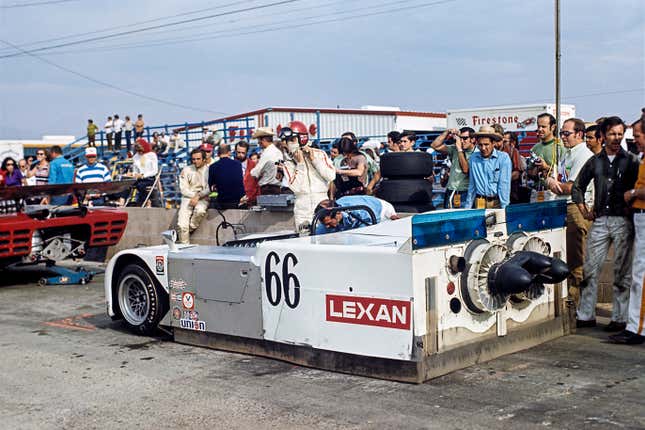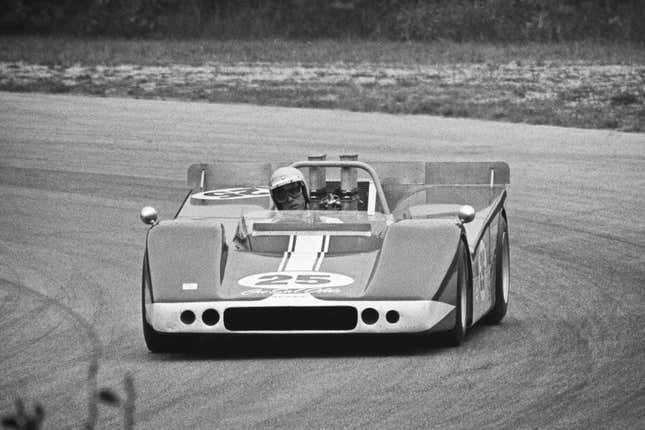
If you ask a man how much he thinks about the Roman empire, apparently he’ll tell you that it eternally occupies some portion of his brain. For me, that brain segment is eternally occupied by the Canadian-American Challenge Cup — better known as Can-Am — and all of the frankly ridiculous and incredible machines that the series produced.
Can-Am was run on Group 7 sports car regulations, which essentially made it a “Formula Libra” event — one with few regulations, unrestricted aerodynamics, and unlimited engine sizes. Basically, you just had to meet a few minor safety standards, and have enclosed wheels and two seats. If you met those criteria, you were set.
Today, I’m running through some of my favorite, wildest Can-Am machines from the original series that ran from 1966 to 1974.











